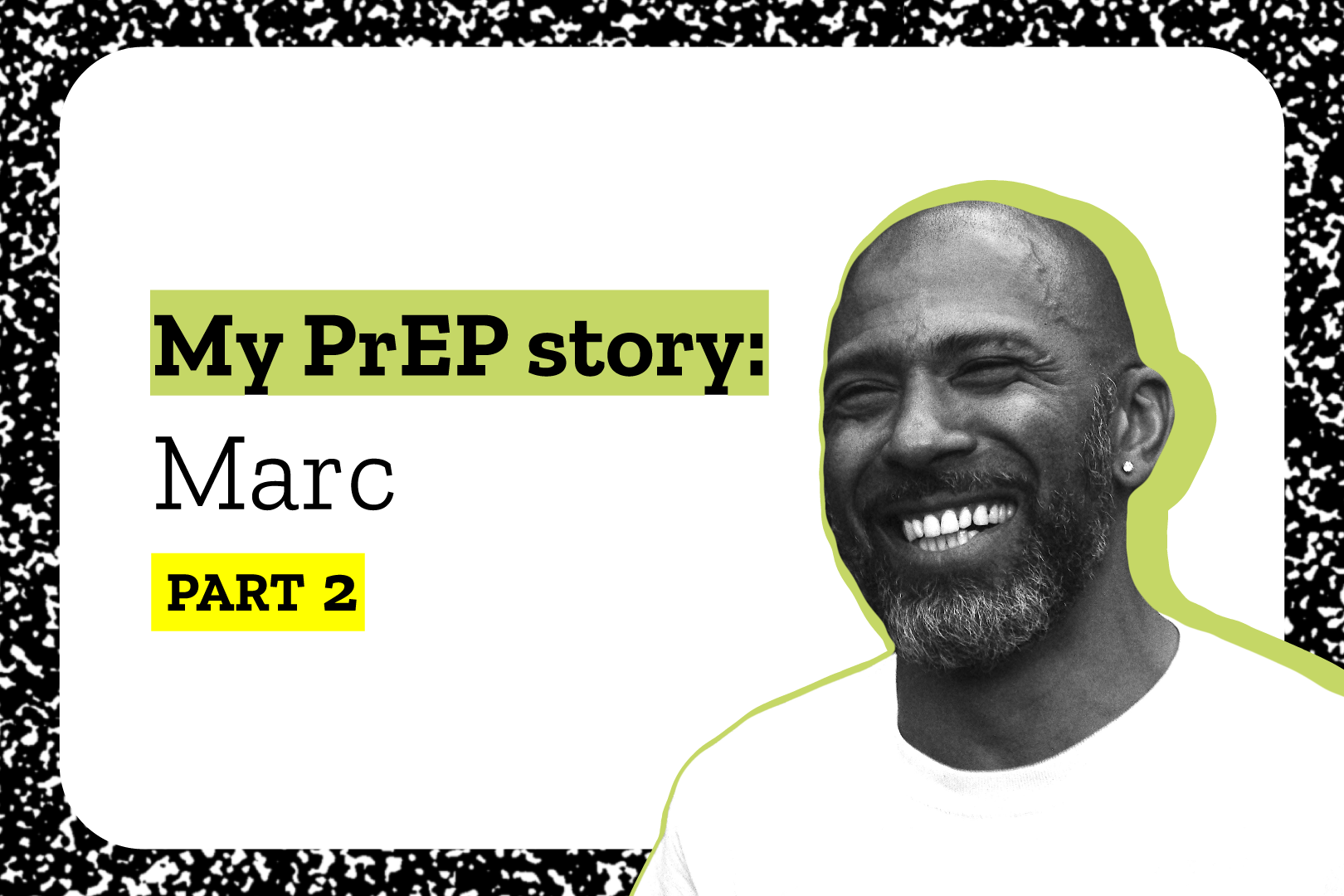My PrEP Story: Marc (part 2)

In his second My PrEP Story, PrEPster co-founder Marc Thompson talks about how the needs and voices of people with HIV shouldn’t be lost in the push for PrEP and U=U. In the drive for biomedical technologies, the sexual health and psychosocial needs of people living with HIV must not slip down the agenda.
My PrEP Story is the personal voice of people who are using, or have used, PrEP, and those who have been at the forefront of providing it and advocating for it. Find out more about their decisions to use PrEP, how they have navigated using PrEP, and their very own PrEP journey.
If you’d like to add your voice to My PrEP Story, check out our helpful guide and email hello@prepster.info
As we enter the 5th decade of the global HIV epidemic we have the tools to end HIV and there is excited and optimistic talk of doing so by 2030.
Since 2016 the number of new HIV diagnoses have fallen across the UK. This drop has been seen most significantly among gay and bisexual men. According to Public Health England’s Progress Towards Ending the HIV Epidemic in the United Kingdom report in 2018, there was a 21% drop and new diagnoses have continued to drop by 20% between 2016 and 2017. If this trend continues we could well be on way to achieving the target of zero new transmissions by 2030.
This is great news and cause for celebration.
Ever since the 1980s, gay and bisexual men have consistently remained a key population at high risk of acquiring HIV in the UK. The PHE report showed there was an estimated 48,900 gay and bisexual men living with HIV in the UK meaning roughly 83 out of every 1000 men who have sex with men (aged 15 to 74) are living with HIV in 2017. In London, my hometown, the numbers are even greater with 134 out of every 1000 living with HIV.
Whilst we celebrate the decrease in new diagnoses we shouldn’t forget that often those newly diagnosed men are young, men of colour or not British born. These are all factors that can lead to lower engagement with clinical and community services leading to poorer health outcomes.
These newly diagnosed men enter a ‘community’ of men who have been living with HIV from 35 years to 6 months. These are men who have a range of experiences from the long term diagnosed who might be ageing with HIV and managing co-morbidities, to more recently diagnosed men struggling with addiction or navigating an unfamiliar healthcare system.
However in the age of biomedical interventions such as PrEP and Treatment as Prevention (TaSP) and a drive to increase HIV testing, outside of much needed campaigns challenging HIV stigma, the sexual health and psycho-social needs of people living with HIV seem to have slipped down the agenda.
Despite good engagement with clinical care and achieving and maintaining viral suppression, gay and bisexual men with HIV are more likely to experience poorer health and well-being than gay and bisexual men who don’t have HIV. This includes being more likely to have other STIs (specifically syphilis), being co-infected with Hep C, reporting higher levels of drug and alcohol use, having poorer mental health and experiencing HIV related stigma and discrimination.
Women living with HIV also experience a range of issues that have a detrimental impact on health and well-being. Almost half of women living with HIV live below the poverty line. Over half have experienced violence because of their HIV status and nearly one third have avoided or delayed attending healthcare due to fear of discrimination.
These factors impact on an individual’s capacity to live well with HIV and may lead to chaotic lifestyles, a reduction in adherence and engagement with clinical care, or increased risk taking and onward transmission of HIV.
Throw into the mix that the population of people with HIV is ageing and therefore face an array of increased health risks, including a doubled risk for cardiovascular disease, a higher risk for kidney disease, lowered bone mineral density and osteoporosis, liver disease, certain cancers and neuro-cognitive impairment.
Researchers are still teasing apart why these health problems are more common among people with HIV. HIV treatments themselves can raise certain health risks. Also, certain behaviours associated with health problems—such as smoking, use of recreational drugs and misuse of alcohol—are more common in the HIV population compared with the general population.
The focus on increasing testing and ending HIV has shifted attention away from the health needs of people living with HIV. There is also an absence of a community response and the engagement of and utilisation of people with HIV as a resource for peer support and education.
The landscape of HIV prevention, treatment and care is always evolving. In over two decades we’ve moved from talking about HIV being a ‘death sentence’ to undetectable=untransmittable.
But in our rush to ‘end the epidemic’ are we leaving those of us with HIV behind? Are those of us taking our pills daily, not passing on the virus and therefore are key players in getting to zero transmission being forgotten?
So what do we do?
We need to restart the conversation about the holistic health needs of people with HIV and have a better understanding of what it means to live with HIV in the age of TaSP and PrEP. We need to recognise that there is life beyond reaching an undetectable viral load and that the lives of people with HIV can sometimes be complex and messy.
The full holistic lives and experiences of PWHIV beyond the impact of stigma need to be considered when developing interventions to improve our well-being. And most crucially people with HIV need to be front and centre in the design and delivery of the responses that are developed to support our needs.
— Marc
